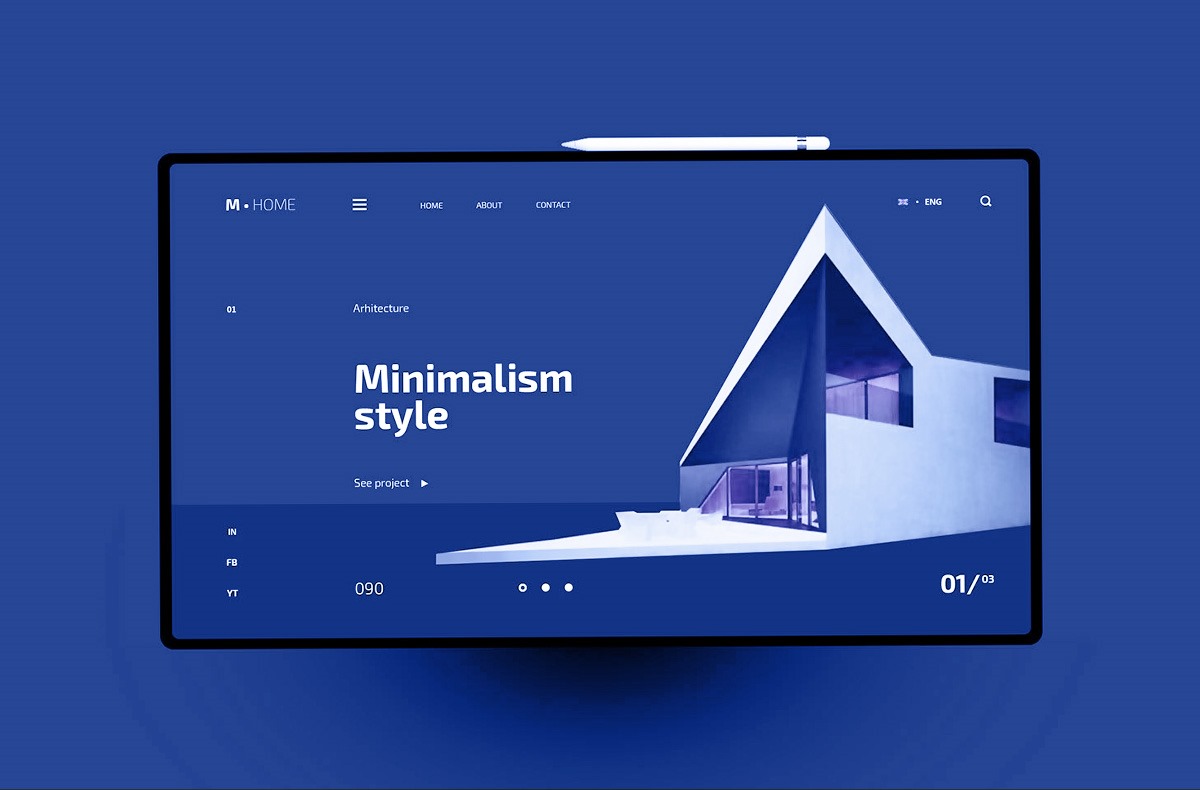When I think about web design 20 years ago, it feels like a trip to a digital museum filled with blinking GIFs, Comic Sans fonts, and hit counters. Back then, websites were loud, chaotic, and over-the-top. They’ve matured into sleek, functional spaces where aesthetics and user experience reign supreme. It’s been a wild ride, and as a tech reporter, I’ve had the front-row seat to this evolution. This transformation is most evident in Columbia, South Carolina, where businesses increasingly recognize the value of affordable, modern web design. Web Design Columbia is at the forefront, bridging the gap between flashy aesthetics and functional affordability.
I’ll take you through the highs and lows of web design’s transformation over the past two decades in this article. We’ll talk about trends that defined eras, technologies that revolutionized the field, and even those that made us collectively groan. I’ll sprinkle in some humor because, let’s face it, we need a chuckle when recalling the time we thought auto-playing music on a homepage was a great idea. And, of course, I’ll highlight how a web design company in Columbia, SC, embodies the lessons learned from this wild history.
The Flash Era: When Websites Were the Digital Wild West
Let’s rewind to the early 2000s. If you were online back then, you probably remember Flash. Oh, Flash—Adobe’s darling that brought us animated intros, interactive menus, and hours of loading screens. Back then, web designers (or anyone with a copy of Macromedia Flash) went wild, creating visually striking but highly impractical websites. They were like digital fireworks: fun to watch but ultimately fleeting.
Globally, Flash was celebrated for bringing life to the web. It allowed for animations, embedded videos, and even games. Websites felt alive for the first time, and that excitement trickled into small business communities everywhere, including Columbia. However, Flash came with significant downsides. It was resource-heavy, inaccessible for users with slower internet speeds, and notoriously bad for search engine optimization (SEO). Google couldn’t crawl Flash content effectively, making it a nightmare for businesses hoping to rank high on search engines.
As the years rolled on, Flash started showing its cracks. The global shift toward mobile-first design sealed its fate. Apple famously refused to support Flash on its iOS devices, with Steve Jobs declaring it outdated and riddled with security vulnerabilities. By 2020, Adobe officially pulled the plug on Flash, marking the end of an era. Today, web design companies in Columbia, SC, and beyond have shifted to faster, more flexible technologies like HTML5. It’s faster, more SEO-friendly, and—let’s be honest—a lot less annoying.
The Rise of Minimalism: Less Is More, But Is It Too Much?
As Flash faded, minimalism emerged as the new king of web design. Inspired by Scandinavian design principles, minimalism stripped websites of unnecessary clutter, focusing on clean lines, white space, and straightforward typography. It was like going from a 1990s rave to a serene Zen garden. This trend wasn’t just aesthetic—it was practical. Minimalist websites load faster, are mobile-friendly, and allow users to focus on the essentials.
Global companies like Apple led the charge, making their clean product pages a blueprint for minimalism. And the trend caught on. Suddenly, businesses of all sizes, including those in Columbia, wanted sleek, modern, and professional websites. But as with any trend, minimalism had its critics.
One major downside of minimalism is that it can feel cold and impersonal. Small businesses that rely on warmth and personality often find minimalist designs too sterile. Moreover, the “less is more” philosophy sometimes leads designers to strip away functionality, confusing users. Affordable websites created by Web Design Columbia address this by striking a balance: clean designs that remain inviting and intuitive. It’s a subtle art that not all web design firms master.
Responsive Design: Adapting to a Mobile-First World
Remember when browsing a website on your phone meant endless pinching, zooming, and frustration? Those days are (thankfully) behind us, thanks to responsive design. Introduced in the early 2010s, responsive design changed the game by allowing websites to adapt seamlessly to different screen sizes. As mobile usage surpassed desktop in 2016, this shift wasn’t just convenient—it was necessary.
Responsive design has been a game-changer, but implementing it has challenges. For example, ensuring a consistent experience across devices requires significant testing and optimization. A web design company in Columbia, SC, like Web Design Columbia, often transforms outdated, non-responsive websites into modern, mobile-friendly platforms. Globally, companies that fail to adapt to responsive design trends face severe consequences. Studies show that 57% of users won’t recommend a business with a poorly designed mobile site.
Responsive design isn’t without its quirks, though. One common complaint is that some designers prioritize mobile users at the expense of desktop experiences. This “mobile-first” philosophy can leave desktop users feeling like an afterthought, mainly when larger screens aren’t fully utilized.
Affordable Web Design: The Democratization of Quality
Here’s where things get interesting. Over the past decade, web design tools have become increasingly accessible. Platforms like WordPress, Squarespace, and Wix have lowered the barrier to entry, allowing even non-technical users to create functional websites. WordPress now powers 43% of the web globally, proving its dominance as a go-to tool for affordable web design.
But here’s the catch: affordability doesn’t always mean quality. DIY website builders are often criticized for their limitations. While they’re great for simple websites, they struggle with scalability and customization. Hiring a professional web design company in Columbia, SC, often ends up being more cost-effective in the long run for businesses in Columbia looking for something more robust. A good agency can ensure that the site looks great, functions smoothly, and ranks well on search engines.
Interestingly, global giants like Spotify and Disney use highly customized CMS platforms tailored to their needs. While small businesses may not have access to such resources, companies like Web Design Columbia work hard to replicate that level of customization on a budget.

User Experience (UX) and Accessibility: Designing for Everyone
In the world of web design, user experience is everything. A site might look stunning, but if users can’t navigate it quickly, they’ll leave faster than you can say “bounce rate.” Global statistics back this up: 88% of online consumers are less likely to return to a site after a bad experience.
User experience isn’t just about navigation; it’s about accessibility too. Designing websites for people with disabilities is no longer optional—it’s a necessity. Web Content Accessibility Guidelines (WCAG) set global standards for accessible design, but compliance can be tricky. Affordable web design companies like Web Design Columbia understand how to integrate accessibility features without driving up costs, making websites inclusive and functional for everyone.
Of course, accessibility has its challenges. Adding alt text, ensuring color contrast, and designing keyboard-friendly navigation requires time and effort. But the payoff is worth it. Accessible websites don’t just cater to a broader audience—they often rank higher on search engines, making them a win-win for businesses.
The Future of Web Design: What’s Next?
As we look ahead, it’s clear that web design will continue to evolve. Artificial intelligence (AI) is already making waves, with tools like ChatGPT and DALL-E helping designers automate repetitive tasks. Meanwhile, advancements in augmented reality (AR) and virtual reality (VR) are opening up new possibilities for immersive web experiences. Imagine shopping for furniture online and being able to visualize how it would look in your living room—that’s the future we’re heading toward.
But with new technologies come new challenges. AI tools, while powerful, aren’t perfect. They can lack the human touch and occasionally produce questionable results (trust me, I’ve seen AI-generated design suggestions that look like a fever dream). Similarly, AR and VR require significant investment, which isn’t always feasible for small businesses in Columbia.
Bringing It All Together: Affordable Design That Works
Two decades of web design trends have taught us one thing: balance is everything. Whether Flash’s over-the-top animations or minimalism’s stripped-down approach, every trend has strengths and weaknesses. The key is to adapt these lessons to create functional, affordable, and future-proof websites.
Web Design Columbia offers a unique blend of expertise and affordability for businesses in Columbia, South Carolina. They understand that great design doesn’t have to break the bank—it just requires a little creativity and a lot of experience. If you’re ready to take your website to the next level, why not reach out? After all, the future of your business might just start with a well-designed homepage.
Ready to turn your website into a powerful tool that drives results? At Web Design Columbia, we combine nearly two decades of experience with a passion for creating affordable, high-impact websites tailored to your needs. Whether you’re looking to refresh an outdated site or build a brand-new digital presence, our team is here to make it happen. Let’s work together to craft a website that stands out and delivers. Contact us today to start your journey toward a functional, modern, and user-friendly website representing your business in the best light!



































